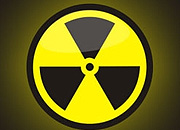"With this decision, the German government has made it clear, that nuclear energy will continue to be needed for some time as one of the main pillars of our energy policy," said CEO Johannes Teyssen. This compromise would allow nuclear energy to make an important contribution to affordability, security of supply and climate protection on the way to tomorrow’s energy supply.
E.ON will push ahead with the expansion of renewable energy in Germany and internationally and is aiming to reduce carbon emissions from power generation for each kWh by 50 percent until 2030. The agreed extension of the operating lives of carbon-free nuclear power plants and our investment in renewables will make it possible to achieve its ambitious climate-protection goal.
The compromise meant considerable burdens for E.ON in the form of taxes and charges. The concrete implications still needed to be examined for each plant. Arithmetically, the government decision means that the operating lives of E.ON’s nuclear power plants Isar 1 and Unterweser will be extended by 8 years each, and those of Grafenrheinfeld, Grohnde, Brokdorf and Isar 2 by 14 years each.
The different extension periods for old and new plants were a political decision which the operators had to accept, Teyssen said. There was no technical justification for this decision because regardless of their age, all plants met the same stringent safety standards. On the whole, the average operating life extension of 12 years was a considerable challenge because it was too short a period to allow the nuclear energy’s bridge function to be used in an optimum way. "What is now required are special additional efforts on all sides to build a stable bridge into Germany’s energy future."
The envisaged fund into which nuclear power plant operators had to pay some of the additional revenues could play an important role and help to accelerate the restructuring of energy production.
Teyssen pointed out that while providing a reliable legal framework, the nuclear energy compromise also meant considerable economic burdens. Even though the tax rate for the nuclear fuel tax is a little lower than originally planned, the tax has to be paid for six years instead of four. Moreover, the tax also applies to existing residual quantities. And there are permanent charges which are paid into a fund to promote renewable energies. On the whole, the government had tightened the screws quite considerably and would skim off most of the windfall profits. The concrete effects and entrepreneurial consequences of this political decision still needed to be analysed in detail.
25 Декабря 2025 | четверг | 10:38


